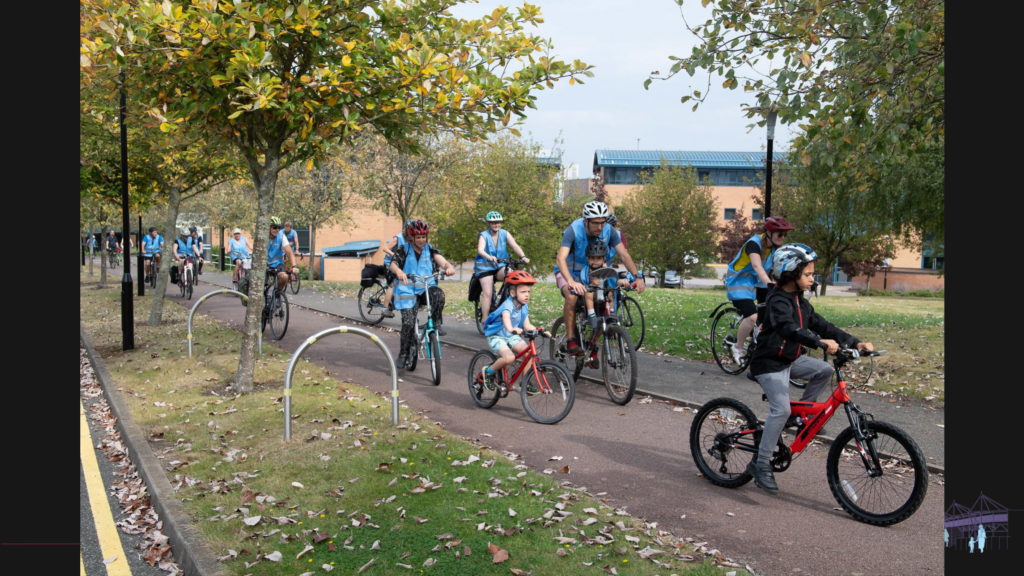
The Coventry Society had a talk about the history and future of Coventry’s cycling infrastructure by Andrew Saffrey on 8th January.
Andrew is the Council’s Active Travel Innovation Manager and has been in post for just over a year.
Andrew explained the history of cycling infrastructure in Coventry and elsewhere in England. Coventry was early in adopting a 1930s government programme for building cycle paths along new roads. Such paths were built along the length of the A45 Coventry bypass and Kenilworth Road and the early stages of the Ring Road. These are still to be seen, but in a somewhat sad condition.
In the post-war era there was experimentation with traffic and pedestrian segregation, which at its extreme led to the unpopular “Radburn layout”. New Towns adopted more successful segregation of pedestrians, cyclists and vehicles and in areas such as Stoke Aldermoor this was also applied in Coventry.
In 1996 the Government launched the National Cycling Strategy, which for the first time set out national targets for cycling.
London boroughs led the way in changing the balance between cyclists and motorists, modelled on the Dutch approach. There is now even a cycleway passing in front of Buckingham Palace.
The concept of “villagisation” grew out of this work, now recognised the “liveable neighbourhood” concept.
Andrew then told us about the process of introducing the Earlsdon Liveable Neighbourhood. Using funding from four different funding streams the council engaged in a multi-stage consultation process with the local community which engaged over 6000 people. Despite some people wanting no change at all, there was a strong voice for the proposed works.
Andrew told us about the highlights and challenges of the scheme, which was implemented from June to October last year and culminated in a 20-mph speed limit for the whole area.
For the future, we can look forward to the West Midlands wide Starley Network of cycling routes. Apparently naming the network after one of Coventry’s cycling heroes didn’t go down well in Birmingham.
In Coventry a more detailed plan will emerge from work on the Local Cycling & Walking Infrastructure Plan, which will be a “daughter” document to the city’s Transport Strategy.
In the discussion that followed the presentation, the main concern was the use of illegal e-bikes that are used by many food delivery companies. It was felt that the behaviour of these riders was giving genuine cyclists a bad name. The lack of enforcement of existing powers was a particular issue.
